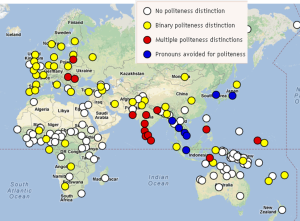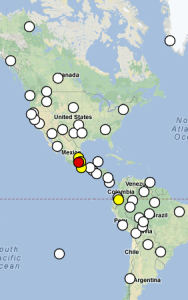When my students complain about “all those accent marks” in Spanish, I tell them that matters could be far worse. They could be studying French.
Consider the French phrase fête d’élèves (“student party”). This simple phrase illustrates four substantial differences in how French and Spanish use accent marks:
- The French phrase has three different accent marks: acute (é), grave (è), and circumflex (ê). Spanish only has one: acute.
- The word élèves has two accented vowels (even more are possible, as in répété “repeated”). Spanish allows only one per word.
- The French accent marks affect the pronunciation of individual letters: the é sounds roughly like ai in English bait, the ê and è like e in English bet, and the unaccented e‘s are silent. This never happens in Spanish.
- The circumflex accent in fête serves as a mini-lesson in the history of the word, memorializing the loss of an s from Latin festus (compare Spanish fiesta). Every Spanish accent mark has a contemporary purpose. In fact, the Spanish language Academy periodically purges accent marks that it considers passé. For example, it recently eliminated the accent on the word o (meaning “or”) when it appears between two numbers, as in 8 ó 9 (now 8 o 9). Previously, it was thought that the accent would prevent this phrase from being misread as 809, but since most written Spanish these days is typeset, not hand-written, misreadings are no longer an active concern.
In fact, the only thing that French and Spanish accent marks have in common is that they are only found on vowels. Not that our more creative students don’t try putting them on consonants from time to time…
Any decent textbook or review book [Update: or this later post] will explain why Spanish does use accents: basically, to highlight stress that is unusual because it:
- breaks the normal rules for which vowel to stress within in a vowel sequence (e.g. día vs. diablo);
- breaks the normal rules for which vowel to stress within a word (e.g. teléfono vs. necesito).
- marks the member of an otherwise identical word pair that is usually more important to the meaning of a sentence, like sí vs. si in Sí, vendré si puedo “Yes, I’ll come if I can.” If one of the two words can stand alone in a sentence, it’ll be this one.
For the punctuation fanatic, the ultimate read is the Academy’s current spelling guide, or Ortografía, which devotes fully 65 pages (!!!) to the topic.









